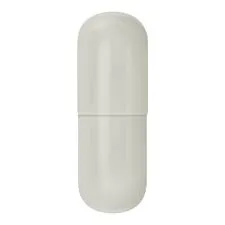
Nov . 08, 2024 05:10 Back to list
Exploring the Properties and Applications of Methyl Hydroxyethyl Cellulose in Various Industries
The Versatility of Methyl Hydroxyethyl Cellulose A Comprehensive Overview
Methyl Hydroxyethyl Cellulose (MHEC) is a non-ionic cellulose ether that is widely used in various industries due to its exceptional properties and versatility. Derived from cellulose, which is a natural polymer obtained from plants, MHEC is primarily utilized in the construction, food, pharmaceuticals, and cosmetics industries. Its unique characteristics make it an essential ingredient in many applications, where it serves various functions such as thickening, binding, and film-forming.
Chemical Structure and Properties
The chemical structure of MHEC consists of hydroxyethyl groups and methyl groups attached to the cellulose backbone. This modification enhances its solubility in both cold and hot water, making it a preferred choice in formulations that require varying temperatures. One of the key characteristics of MHEC is its ability to form viscous solutions, which makes it an excellent thickening agent. Additionally, it possesses great stability against salt concentrations, heat, and changes in pH, allowing it to maintain its functional integrity under diverse conditions.
Applications in the Construction Industry
In the construction sector, MHEC is commonly used in cement-based formulations, including tile adhesives, grouts, and mortars. Its thickening properties ensure a smooth and consistent texture, improving workability and adhesion. The ability of MHEC to retain water significantly enhances the open time of these products, allowing for more extended application periods before they harden. This property is especially crucial in environments where job conditions may vary, enabling construction workers to achieve optimal results.
Moreover, MHEC effectively reduces the risk of cracking and shrinkage in cement products by providing better hydration of cement particles. As a result, it contributes to the overall durability and performance of construction materials, making it invaluable to the industry.
Role in the Food Industry
In the food industry, MHEC serves as a thickener, stabilizer, and emulsifier. It is commonly found in products such as sauces, soups, salad dressings, and dairy items. Its ability to create a desirable texture while preventing separation or sedimentation of ingredients makes it a sought-after component. Additionally, because MHEC is derived from natural cellulose, it is considered safe for consumption, complying with food safety regulations.
methyl hydroxyethyl cellulose

MHEC contributes to the overall mouthfeel of products, enhancing the sensory experience for consumers. Its role as a fat replacer in reduced-calorie foods is particularly noteworthy, where it provides the creamy texture without adding extra calories.
Pharmaceutical and Cosmetic Applications
In the pharmaceutical sector, MHEC is utilized as a binder and film-forming agent in tablet formulations. Its water-retaining properties aid in controlled drug release, which is crucial for achieving desired therapeutic effects. Moreover, MHEC enhances the stability of formulations, facilitating the production of high-quality pharmaceutical products.
In the cosmetic industry, MHEC functions as a thickener and stabilizer in lotions, creams, and gels. Its ability to provide a smooth application and enhance the aesthetic characteristics of cosmetic products makes it a popular ingredient among formulators. The biocompatibility of MHEC ensures that it is gentle enough for sensitive skin, further broadening its appeal.
Environmental Considerations
Given the increasing emphasis on sustainability, MHEC's role in various industries has become even more critical. As a product derived from renewable resources, its use aligns with eco-friendly manufacturing practices. Furthermore, research into more environmentally friendly synthesis methods for MHEC is ongoing, aiming to reduce the environmental impact associated with synthetic alternatives.
Conclusion
Methyl Hydroxyethyl Cellulose is a versatile compound with multifaceted applications across different industries. From enhancing construction materials to improving food textures and stabilizing pharmaceutical formulations, its unique properties make it an invaluable ingredient. As industries continue to seek sustainable solutions, MHEC’s natural origins and functional benefits position it as a key player in future innovations. Understanding its characteristics and applications can lead to more efficient formulation processes, yielding products that meet the evolving needs of consumers while adhering to environmental standards. The future of MHEC is bright, and its potential continues to be explored for even broader applications in the years to come.
-
Versatile Hpmc Uses in Different Industries
NewsJun.19,2025
-
Redispersible Powder's Role in Enhancing Durability of Construction Products
NewsJun.19,2025
-
Hydroxyethyl Cellulose Applications Driving Green Industrial Processes
NewsJun.19,2025
-
Exploring Different Redispersible Polymer Powder
NewsJun.19,2025
-
Choosing the Right Mortar Bonding Agent
NewsJun.19,2025
-
Applications and Significance of China Hpmc in Modern Industries
NewsJun.19,2025







